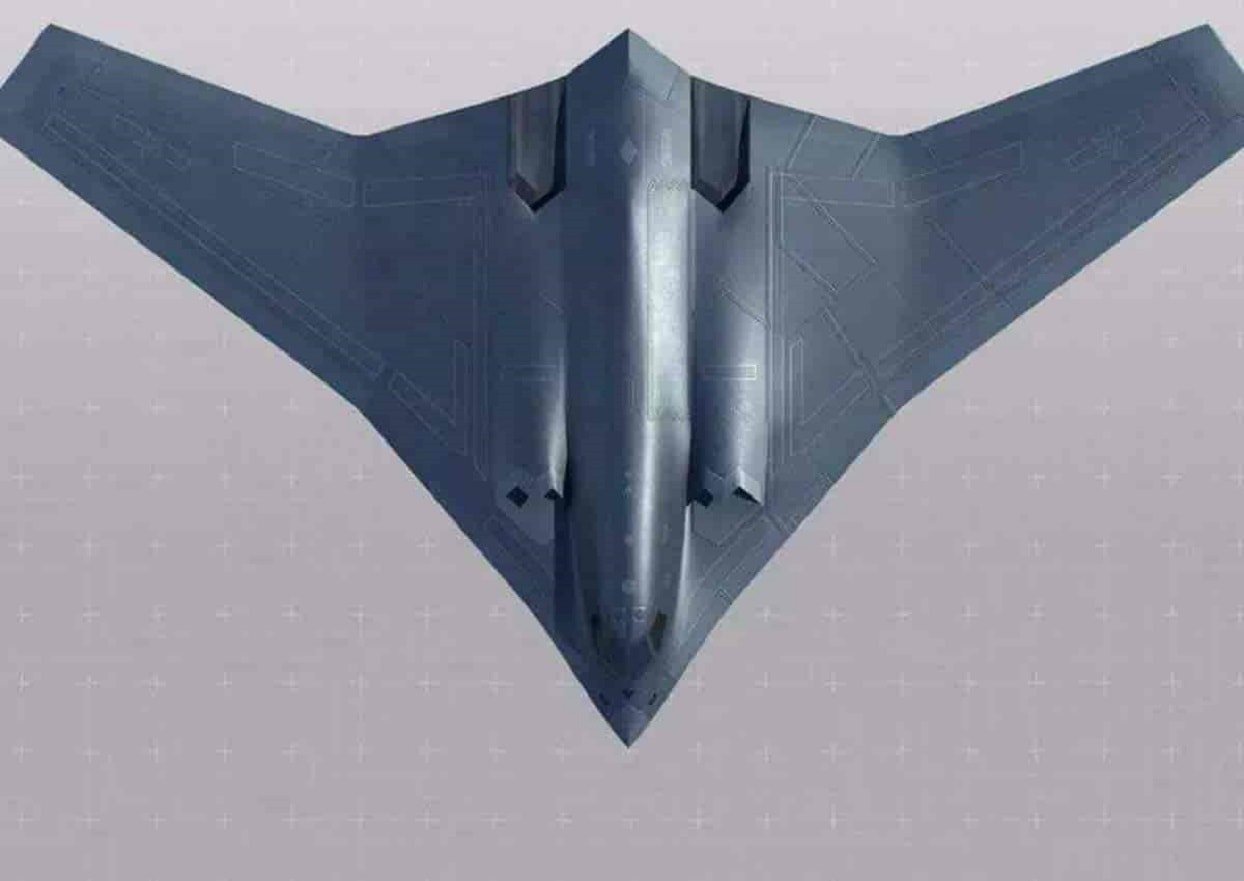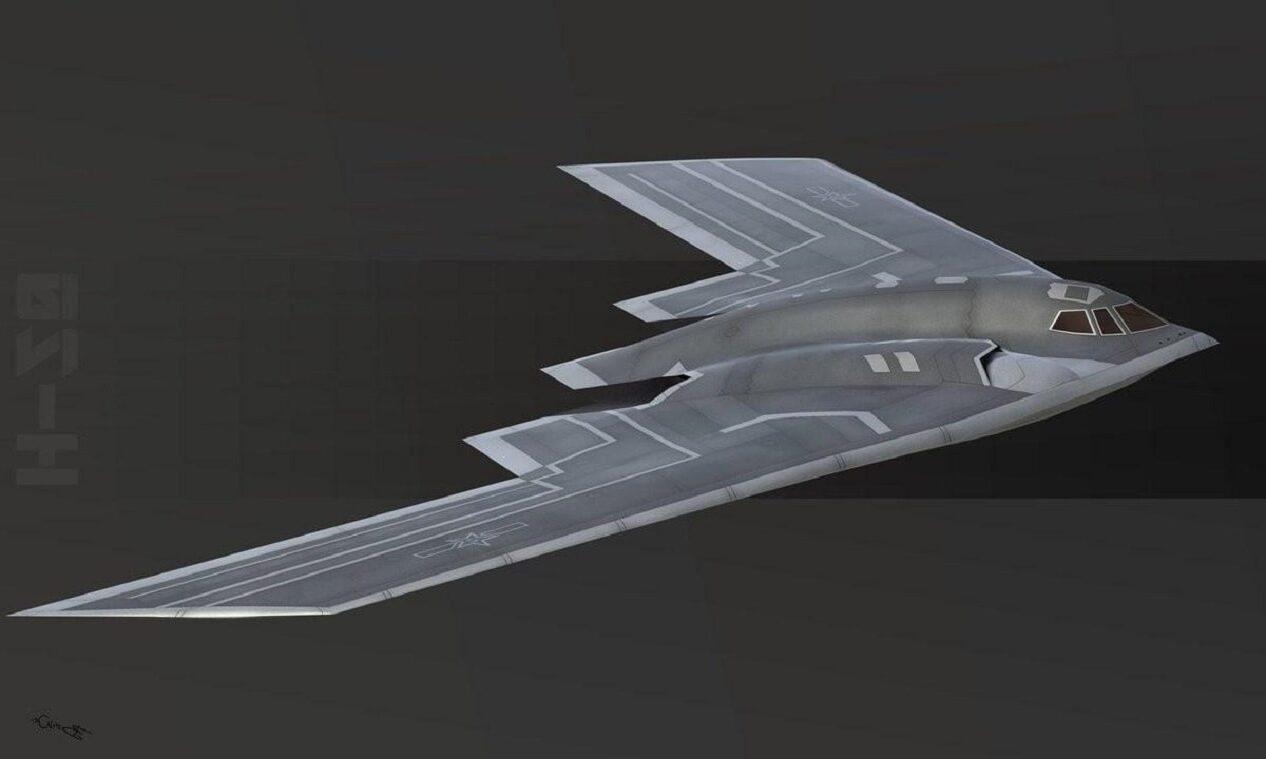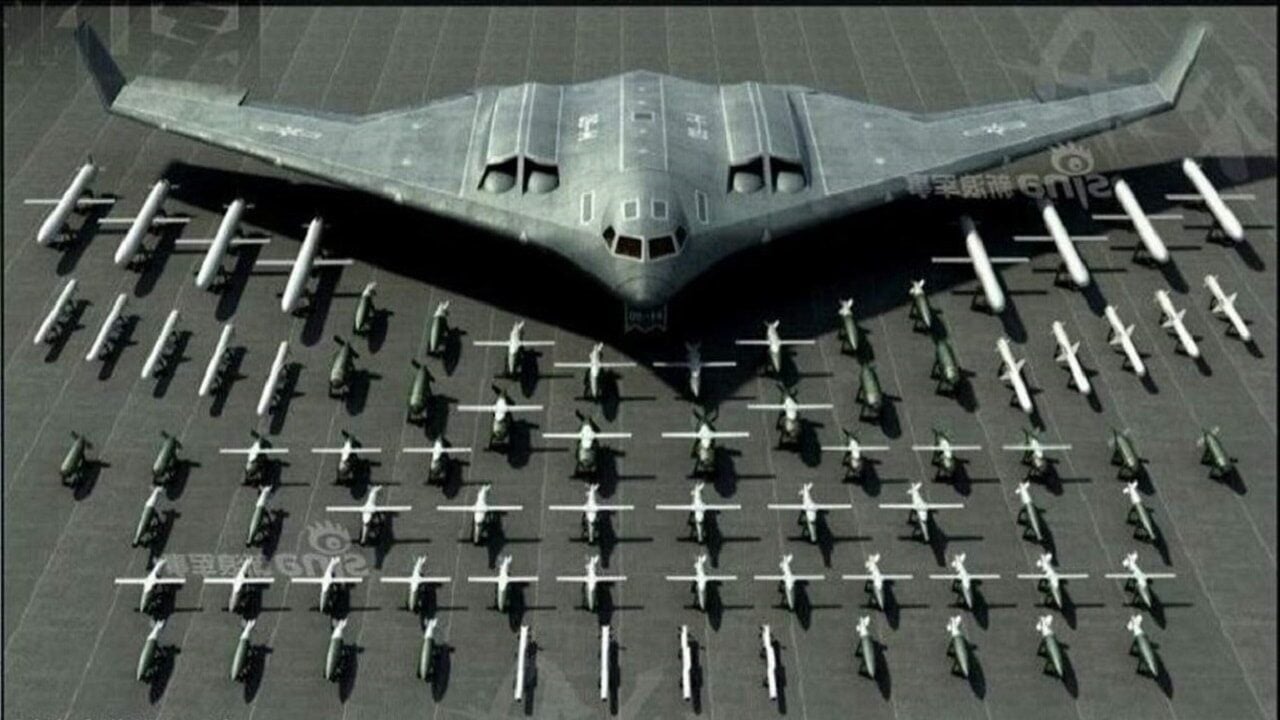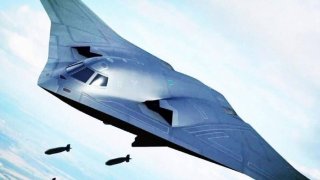China's New H-20 Stealth Bomber Is a Giant Question Mark
A few years later, Chinese military officials confirmed the H-20 was undergoing “great progress” in its development phases.
Meet China's New H-20 Stealth Bomber: The Pentagon released its annual China Military Power Report last month, which outlined how Beijing is ramping up upgrades to its J-20 Chengdu fighter jet platform.
Additionally, the report covered minimal new details on the PRC’s new H-20 stealth bomber program.
The copycat version of the U.S. Air Force’s own B-2 bomber will reportedly have a nuclear mission in addition to fighting conventional roles, as detailed by Chinese state-run media outlets.
Beijing is planning to unveil its new subsonic airframe sometime this decade, which will directly rival its American counterpart.
Many details surrounding the H-20 remain a mystery, however, the USAF’s former stealth bomber monopoly may be coming to an end very soon.
What We Know: A Brief History of China’s H-20 Bomber
China’s H-20 bomber will serve as the country’s third leg in its nuclear triad.
The PRC already possesses land-based and sea-based military platforms capable of delivering nuclear weapons, including submarines and ICBM launchers. The introduction of the stealth bomber will elevate Beijing’s nuclear prowess.
This long-range bomber was first revealed to be under development back in 2016 when the People’s Liberation Army Air Force (PLAAF) general Ma Xiaotian announced the project publicly.
A few years later, Chinese military officials confirmed the H-20 was undergoing “great progress” in its development phases. Also in 2018, the Aviation Industry Corporation of China released video footage of an airplane underneath a dropcloth that was supposedly the H-20 bomber. Although this may have just been footage of a mock-up, it indicated that the PRC was indeed trucking along in its bomber progress.

Based on the imagery revealed of the H-20, analysts believe that the bomber will feature a flying wing design, which would provide the airframe with critical stealth abilities.
A report by the Drive also suggested that the radar might use conformal antennas and possess a primary armament of subsonic cruise missiles. “It’s thought that work on the H-20 began at XAC’s 603 Aircraft Design Institute in the early 2000s and that both subsonic flying-wing and supersonic delta-wing configurations were studied and yielded several scale models. It seems that by around 2011, the designers had settled on a subsonic flying wing, likely with four engines.
“In terms of creating a functional flying-wing bomber, there have been suggestions that XAC may have benefited from experience gained with the GJ-11 Sharp Sword combat drone, as well as other drones of similar configuration, albeit in a much smaller size. Certainly, designs like the Sharp Sword are likely to have yielded important data on flight-control systems and radar-defeating technologies, the latter including the GJ-11’s dorsal engine intake.”

H-20 Mystery
China’s H-20 bomber has a reported range of more than 8,500 kilometers, which if true would give the airframe reach “beyond the second island chain.” The USAF’s B-2 on the other hand, possesses a range of roughly 6,700 miles.
According to the Pentagon’s report, the PLA “may also be developing a refuellable bomber that could “reach initial operating capability before the long-range bomber.”
This range is worrisome since the H-20 could theoretically hold Japan, the Philippines, and also threaten the U.S. territory of Guam. As suggested by Kris Osborn, an extended refueler could even enable the H-20 to threaten Hawaii or part of the continental United States.

A B-2 Copycat?
In its quest to counter America’s aerial supremacy, Beijing has gained a reputation for copying U.S. and other Western military designs and products.
American officials first became aware of the PRC’s strides to develop its own stealth bomber in the late 1990s when Beijing gained access to a downed American-made stealth F-117 Nighthawk over the Balkans. In the early 2000s, a Northrop Grumman employee was caught trying to transfer tech intelligence to China regarding the B-2’s stealth engine.
While Beijing continues to make progress in its H-20 program, the USAF is not sitting idly by. In fact, the service’s new B-21 “Raider” bomber took its first flight last week. Like its B-2 predecessor, the Raider will be capable of delivering both conventional and nuclear weapons across the globe using long-range and mid-air refueling systems.
According to the Air Force, the B-21 is on track to be produced in the mid-2020s. Pentagon leadership has asserted that the upcoming airframe will serve as the backbone of America’s bomber force.
Since Beijing is always seeking a qualitative nuclear edge over Washington, the speedy introduction of the Raider to service is imperative. Tensions between the U.S. and China are peaking at the moment.
Since America is currently involved indirectly with the Russia-Ukraine and Israel-Hamas Wars, the PRC could exploit its minimized attention in the South China Sea. The incorporation of the Raider into the USAF’s arsenal will give the service an edge much needed as the threat of kinetic war arises.
About the Author
Maya Carlin is an analyst with the Center for Security Policy and a former Anna Sobol Levy Fellow at IDC Herzliya in Israel. She has by-lines in many publications, including The National Interest, Jerusalem Post, and Times of Israel. You can follow her on Twitter: @MayaCarlin.
All images are Creative Commons.


